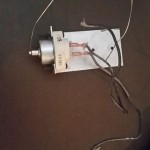Fireplace Insert Pellet Stoves: An Efficient Heating Solution
Fireplace insert pellet stoves represent a modern and efficient approach to heating homes. Designed to fit directly into existing masonry or factory-built fireplaces, these appliances offer a convenient way to upgrade an older, less efficient fireplace into a valuable heat source. They burn compressed wood pellets, a renewable biofuel made from recycled wood waste, providing a cleaner and more sustainable heating option compared to traditional wood-burning fireplaces.
The popularity of fireplace insert pellet stoves has grown significantly in recent years due to several factors, including rising energy costs, increased environmental awareness, and advancements in pellet stove technology. Modern pellet stoves are equipped with sophisticated features such as automatic ignition, programmable thermostats, and self-cleaning mechanisms, making them easier to operate and maintain than older models.
Key Benefits of Fireplace Insert Pellet Stoves
One of the primary advantages of using a fireplace insert pellet stove is its high efficiency. Traditional open fireplaces are notoriously inefficient, with much of the heat generated escaping up the chimney. In contrast, pellet stoves are designed to maximize heat transfer, directing warm air into the living space. The efficiency of a pellet stove is typically between 75% and 90%, meaning that most of the energy from the burning pellets is converted into usable heat. This high efficiency translates into lower heating costs and reduced fuel consumption compared to traditional fireplaces or older heating systems.
Another crucial benefit is the environmental friendliness of pellet stoves. Wood pellets are a renewable fuel source, often made from waste materials that would otherwise end up in landfills. Burning pellets produces significantly less particulate matter and greenhouse gas emissions than burning wood in a traditional fireplace. Additionally, pellet stoves are often EPA-certified, meaning they meet stringent emission standards aimed at reducing air pollution. This makes pellet stoves a more environmentally responsible heating option, particularly for those concerned about their carbon footprint.
Convenience is also a significant factor in the appeal of pellet stoves. Unlike wood-burning fireplaces, pellet stoves require minimal manual labor. Pellets are typically sold in bags that are easy to store and handle. Most pellet stoves have a hopper that can hold a substantial amount of pellets, allowing for extended burn times without the need for frequent refueling. The automatic ignition and thermostat control further enhance the convenience, allowing users to set a desired temperature and let the stove automatically adjust the burning rate to maintain that temperature. Some models even come with remote control capabilities, providing added convenience and control.
Installation Considerations
While fireplace insert pellet stoves offer numerous benefits, proper installation is critical to ensure safe and efficient operation. A qualified professional should always handle the installation to guarantee compliance with local building codes and manufacturer specifications. The installation process typically involves several key steps.
First, the existing fireplace must be inspected to ensure it is structurally sound and capable of accommodating the pellet stove insert. Any necessary repairs or modifications to the fireplace may need to be completed before beginning the installation. This includes checking the chimney for obstructions and ensuring that it is properly lined to prevent creosote buildup and potential chimney fires. A stainless steel chimney liner is typically required for pellet stoves.
Next, the pellet stove insert is carefully positioned within the fireplace opening and connected to the chimney liner. Proper sealing is crucial to prevent exhaust gases from leaking into the home. The stove is then connected to a power source, and the venting system is thoroughly inspected to ensure proper airflow. It is essential to follow the manufacturer's instructions carefully during the installation process to avoid any potential hazards or performance issues.
Maintenance and Operation
Proper maintenance is essential for ensuring the longevity and efficient operation of a fireplace insert pellet stove. Regular cleaning is necessary to remove ash and debris that can accumulate inside the stove and venting system. The frequency of cleaning will depend on the stove model and the type of pellets used, but it is generally recommended to clean the stove at least once per week during periods of heavy use.
The ash pan should be emptied regularly to prevent it from overflowing, and the burn pot should be cleaned to ensure proper air circulation. The venting system should also be inspected and cleaned periodically to remove any creosote buildup. Creosote is a flammable substance that can accumulate in the chimney and pose a fire hazard. A professional chimney sweep can perform a thorough cleaning and inspection of the venting system to ensure it is in good condition.
Operating a pellet stove is relatively straightforward, but it is important to follow the manufacturer's instructions carefully. When starting the stove, ensure that the hopper is filled with pellets and that the air vents are properly adjusted. The stove will typically ignite automatically, and the thermostat can be set to the desired temperature. Monitor the stove regularly to ensure that it is burning properly and that the flame is consistent. If any unusual noises or smells are detected, shut down the stove immediately and consult a qualified technician.
Choosing the Right Model
Selecting the right fireplace insert pellet stove for a home depends on several factors, including the size of the space to be heated, the desired heat output, and personal preferences. Pellet stoves are typically rated by their BTU (British Thermal Unit) output, which indicates the amount of heat they can produce per hour. It is important to choose a stove with a BTU rating that is appropriate for the size of the room or area to be heated. A stove that is too small may not provide adequate heat, while a stove that is too large may overheat the space and waste fuel.
Consider the hopper capacity. Larger hoppers allow for longer burn times without the need for frequent refueling. Look at the stove's features, such as automatic ignition, programmable thermostats, and self-cleaning mechanisms, which can enhance convenience and ease of use. Read reviews and compare different models to determine which one best suits individual needs and preferences. Consulting with a qualified professional can provide valuable guidance in selecting the right fireplace insert pellet stove.

Pellet Fireplace Inserts Lopi Stoves Made In Usa

Hampton Greenfire Gci60 Pellet Insert Chimney Drs

Pellet Fireplace Inserts Lopi Stoves Made In Usa

Wood Stoves Pellet Gas Fireplace Inserts

Harman Accentra52i Tc Pellet Insert Fireside Hearth Home

Pellet Fireplace Inserts Complete Home Concepts

Agp Pellet Stove Insert All Season Spas And Stoves

Avalon Agp Pellet Fireplace Insert Acme Stove

Pellet Stove Inserts Turn Drafty Fireplaces Into Heaters Complete Home Concepts

Fireplace Insert Stoves Wood Gas Pellet Traditional Baltimore Maryland
Related Posts








